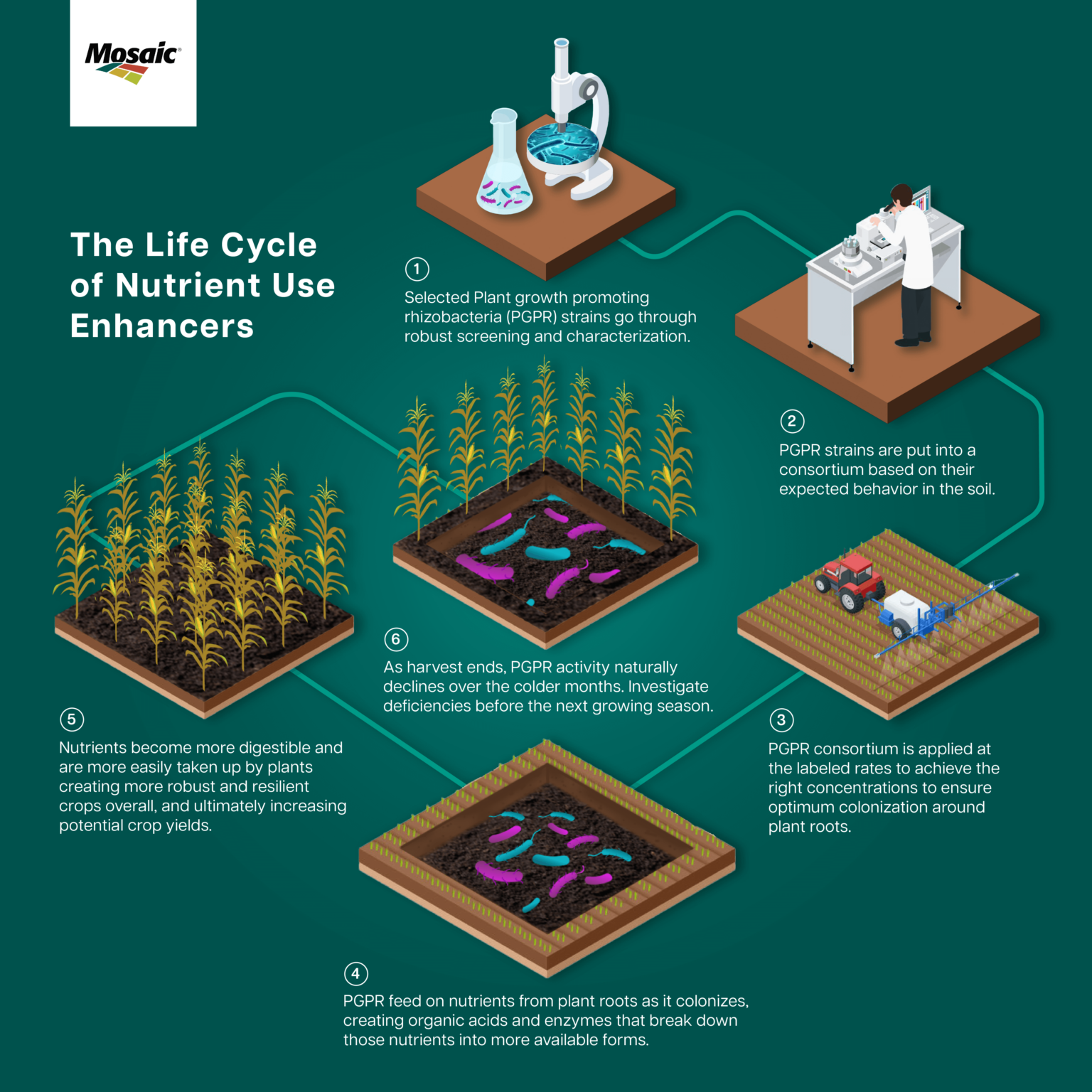If you want to unlock yield potential and increase return on fertilizer investment (ROFI) — soil health is the best place to start, and biological nutrient enhancer technologies are one of the best tools to help.
Up to 60% of yield is dependent on soil fertility and advancing a fertility program for higher yields necessitates feeding the soil that will feed the crop. This starts with understanding how nutrients interact with each other and their movement within the soil and plant.
How It Works
Nutrients in the soil are often in an inaccessible form for plants. By utilizing biological nutrient enhancer technologies — like BioPath® or PowerCoat™ — the connection between microbes and nutrients in the soil is activated.
The mutualistic relationship then helps break down soil-bound nutrients to make them more accessible and available to growing plants, while enhancing the microbial activity in the soil and increasing fertilizer efficiency, ultimately increasing ROFI.
How It’s Made
First, scientists and researchers identify useful strains of PGPR — Plant Growth Promoting Rhizobacteria. Then, those selected PGPR strains go through robust individual screening and characterization.
After individual strains are screened and characterized, they’re put into a consortium based on their expected behavior in the soil. That PGPR consortium is then applied in the right concentrations to ensure optimum colonization around plant roots.
Then, the rhizobacteria feed on carbohydrates in the rhiszosphere as it colonizes, and in the process, creates weak acids that release bound nutrients from the soil. The additional nutrients are then available for plant uptake and use, increasing potential crop yield and improving nutrient use efficiency.
Over time, the soil microbiome returns to its natural balance as the PGPR colony declines. The presence of the PGPR is only maximized for the crop when the concentration is high enough to enable monoculture colonies. The normal state of the soil biology may contain the presence of PGPR for longer but lower concentrations.

Why It’s Important
Science-backed, research-driven biological nutrient enhancer technologies help growers unlock the yield potential in soil and get more out of every acre, this season and every season to come.
Explore TruResponse™ to get an insider view into data trials in your area.